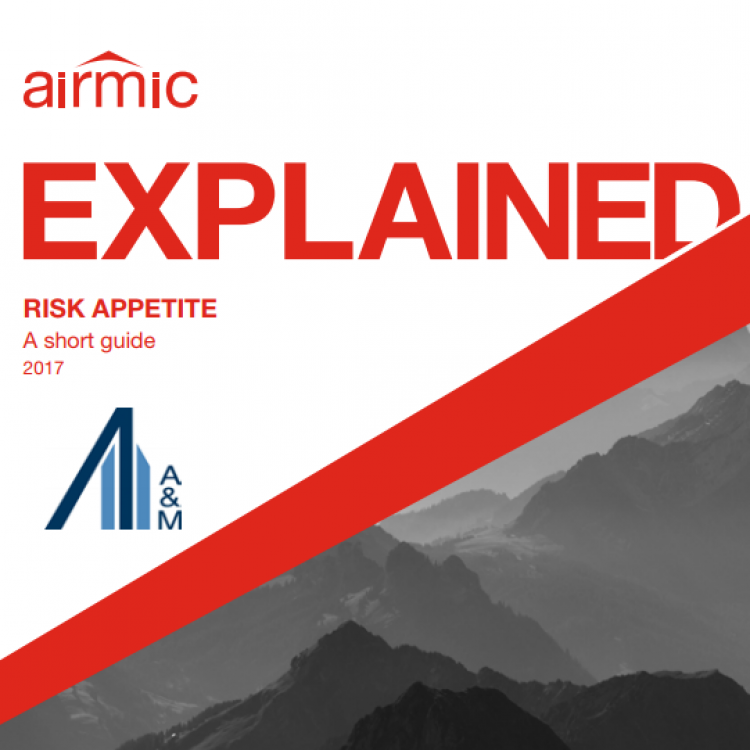Organisations struggling to implement effective risk appetite, warn Airmic and Alvarez & Marsal

New guide for members on how risk appetite can drive business performance
A well-articulated risk appetite not only supports effective risk taking, but drives strategy and improves long-term business performance. That is the key message of a report published today by Airmic in partnership with Alvarez & Marsal (A&M), which advises risk professionals and senior executives on how to effectively set their organisation's appetite for risk.
The report is a practical guide covering the core components of a risk appetite framework and how such a framework can be used in supporting business objectives, including the application of risk transfer through insurance purchase, according to Airmic. It also aims to dispel the many myths surrounding the subject, which have arisen from misunderstandings and conflicting interpretations.
"Many companies treat risk appetite setting as a tick-the-box compliance activity or they try to apply a one-size-fits-all templated approach," according to Tom Teixeira, managing director in A&M's insurance and risk advisory business and one of the authors of the report.
"This guide is therefore not about the ABC of a risk appetite statement," he added. "It's about how risk appetite can be meaningfully applied to drive effective decision making and improve performance by considering the business model, industry change drivers and internal risk culture."
The report argues that the setting and application of risk appetite should not be a one-off exercise, or subject to fixed reviews, but should reflect a fast-changing business environment that can quickly render risk appetite statements and risk tolerance levels obsolete.
"Risk appetite should be as much a cultural journey that supports agile yet risk-aware decision making and management action as it is about frameworks, limits, measures and systems," Mr Teixeira commented.
The close link between risk appetite, strategy and business performance makes this guide an important read for risk professionals, major decision makers and internal auditors, according to Airmic. It also has relevance to regulators and underwriters.
It is particularly useful for professionals in large or complex organisations, where the challenges of setting risk appetite are especially acute. In such organisations multiple, and potentially conflicting, risk appetites can exist and aligning these "pockets of appetite" is notoriously difficult.
The subject of risk appetite prompted lively debate among members at Airmic's ERM Forum last month, including during an over-subscribed workshop hosted by A&M. Common concerns raised by members included how to initiate an effective risk appetite strategy, how best to engage the board and the role of risk appetite when buying insurance.

Tom Teixeira, managing director, Alvarez & Marsal presenting during the ERM Forum
According Mr Teixeira who led the session, members understand the importance of the topic, but often struggle with putting the theory into practice. "It was clear a number of major organisations have a fair bit to do to have in place a robust approach to risk appetite setting and management. The discussions also confirmed that a one-size-fits-all approach is not adequate and that industry- and company-specific approaches need to be developed."
Ultimately, no company can survive in today's competitive environment without taking controlled and informed risk, he added. Establishing how much risk to take and then ensuring this is embedded in the decision-making process is therefore vital. "This has proven not only to act as an effective safeguard, but to drive long-term business performance. The sooner businesses recognise this and act on it, the better," said Mr Teixeira.
Download the report Risk Appetite: A Short Guide here. This is part of the Airmic Explained series; to read other Explained guides visit our technical publications page.
